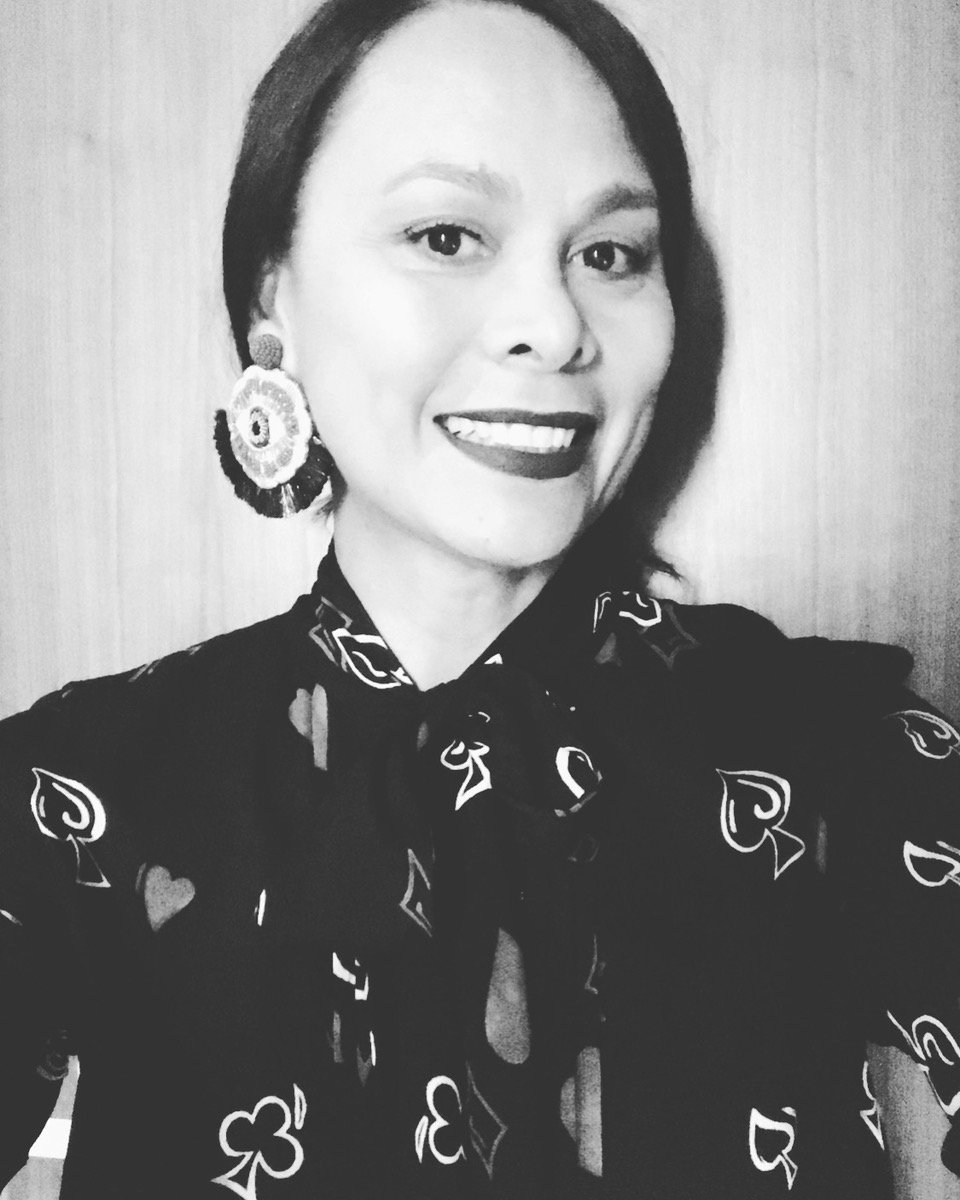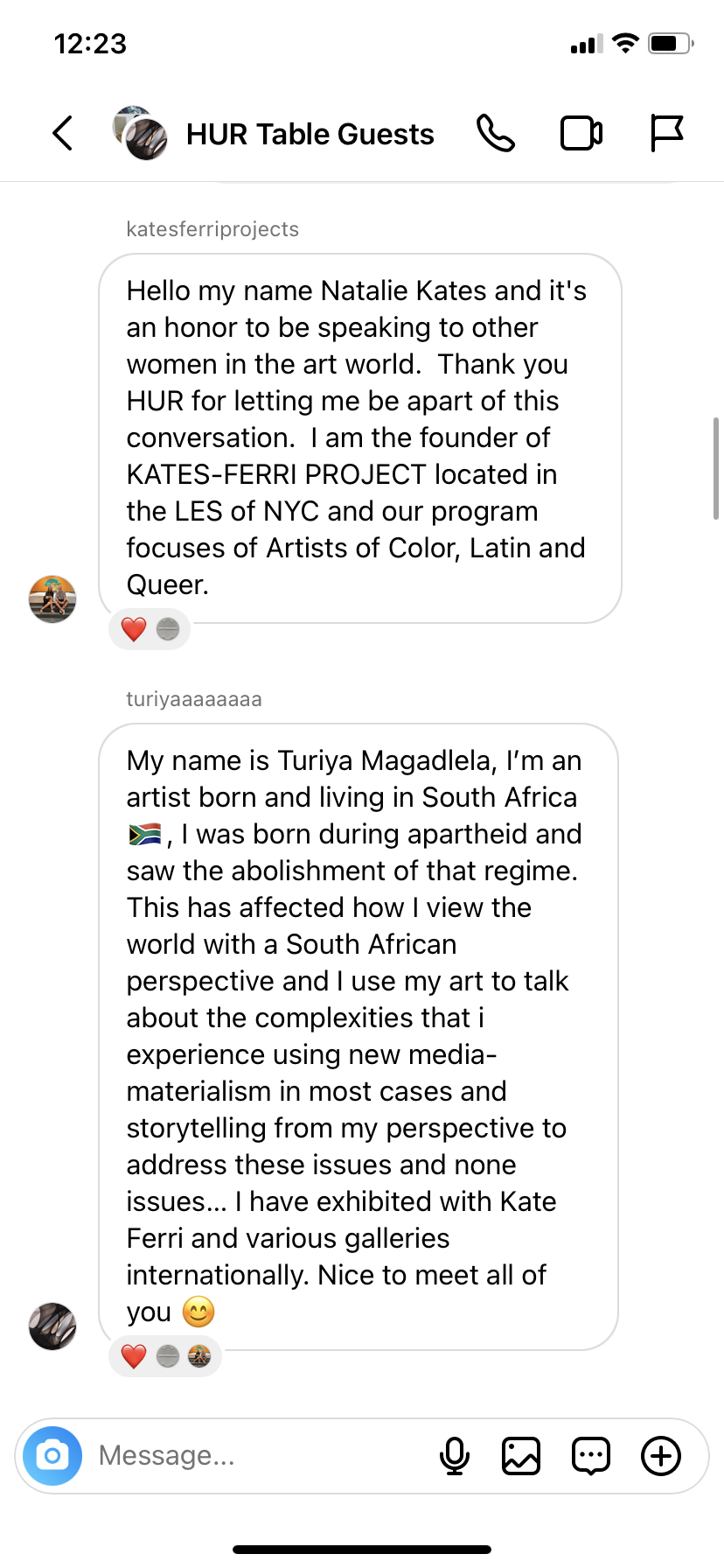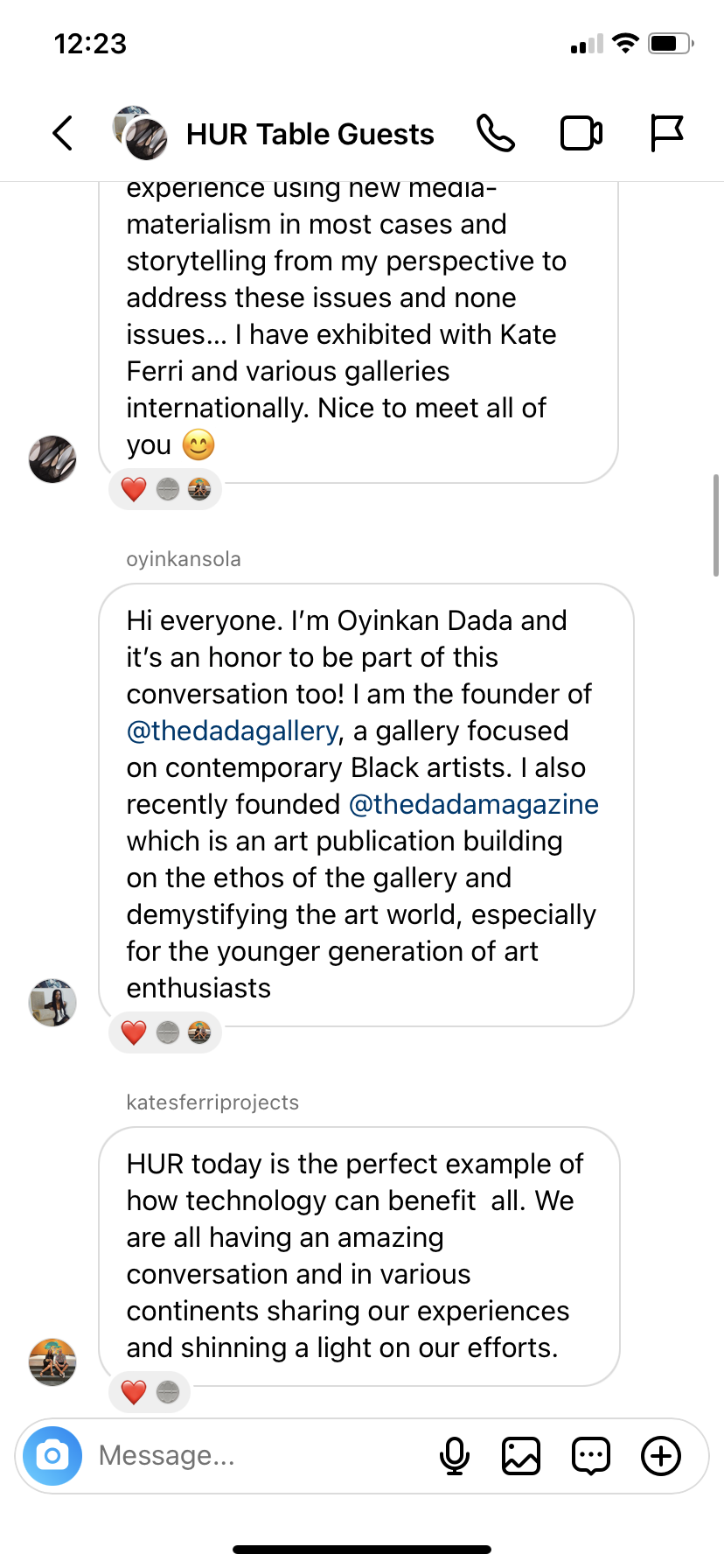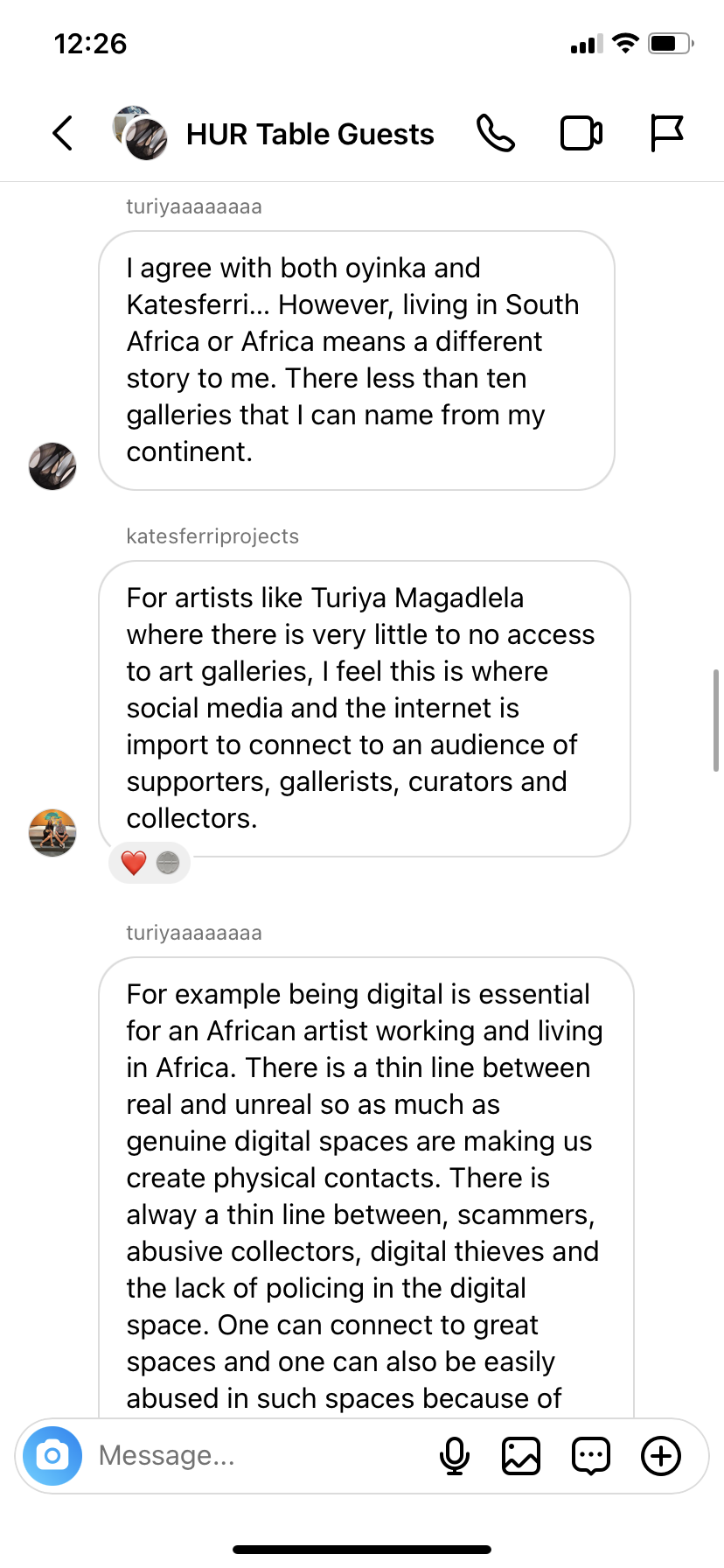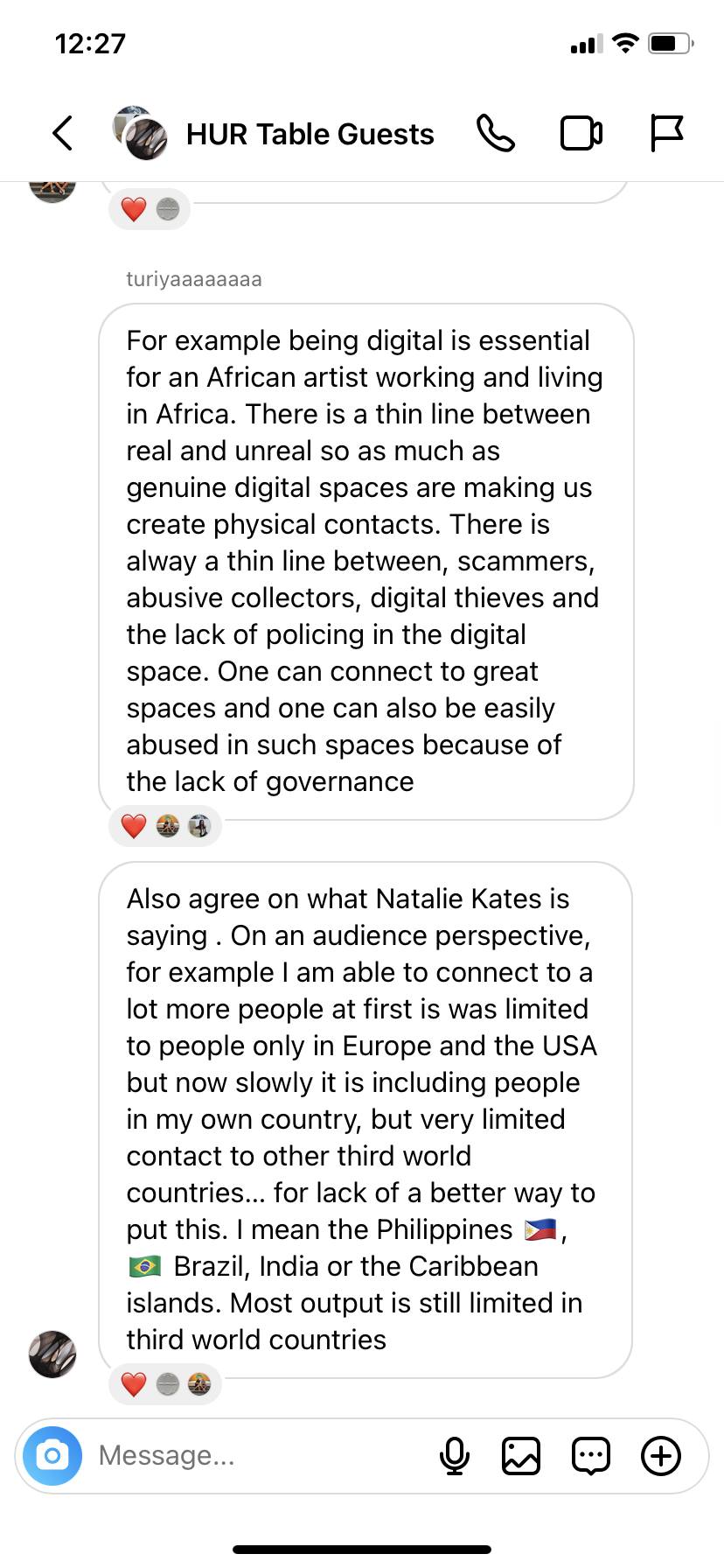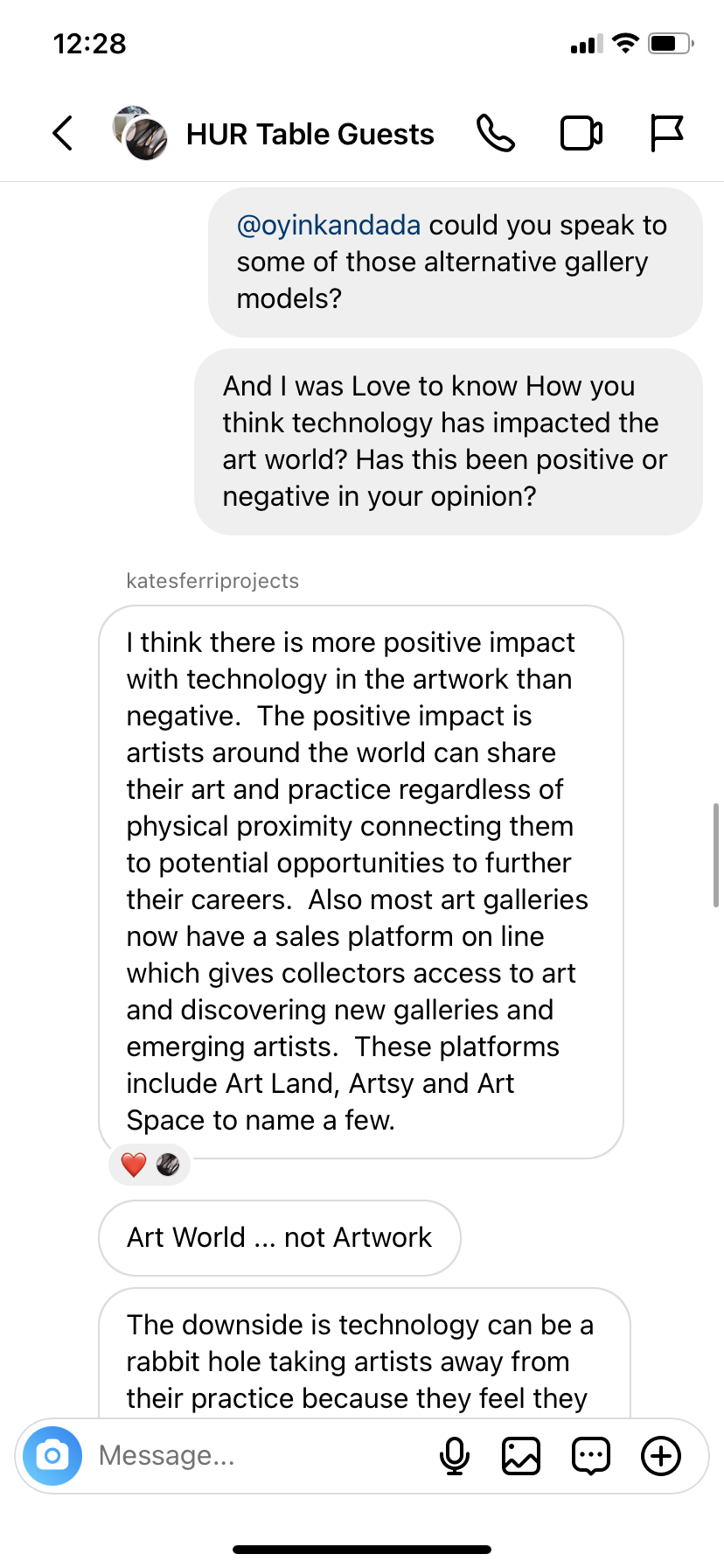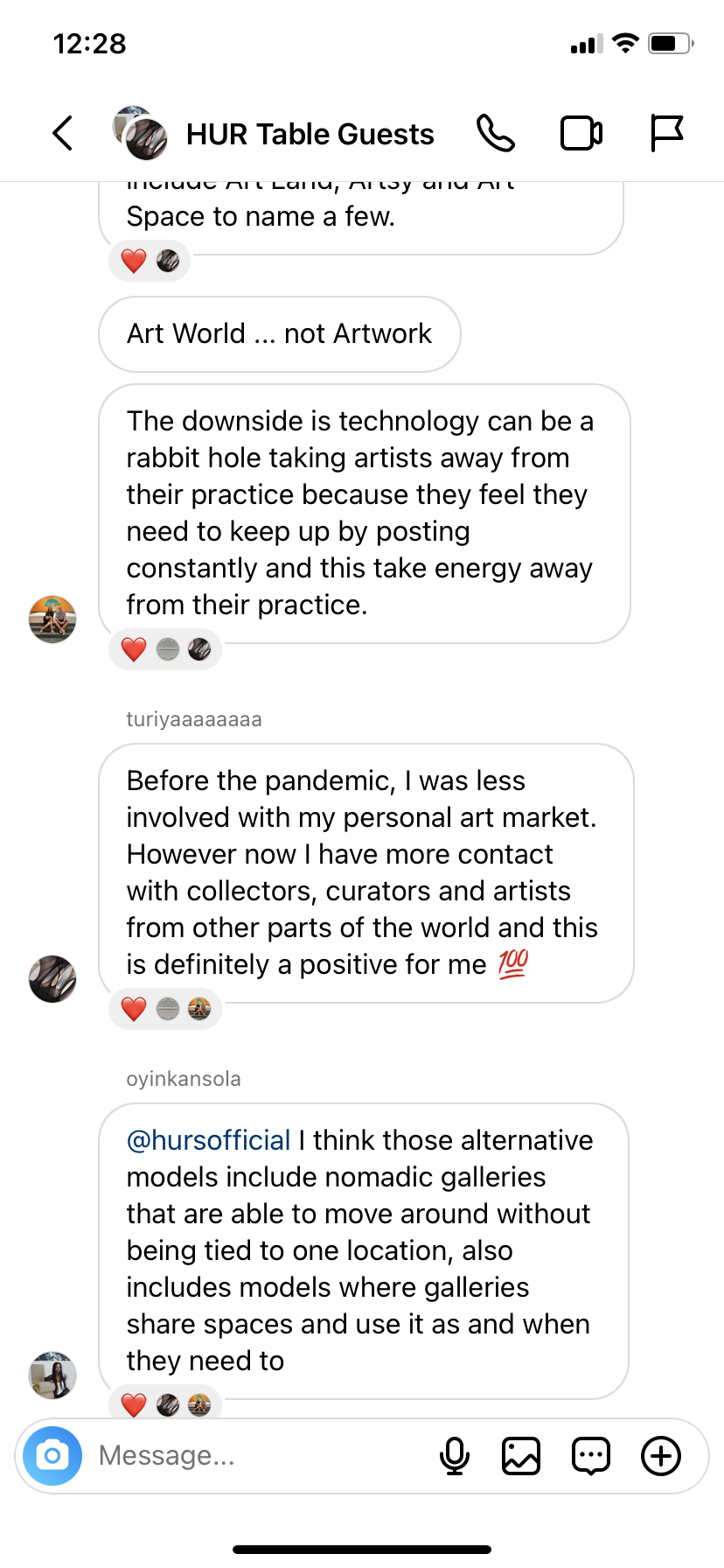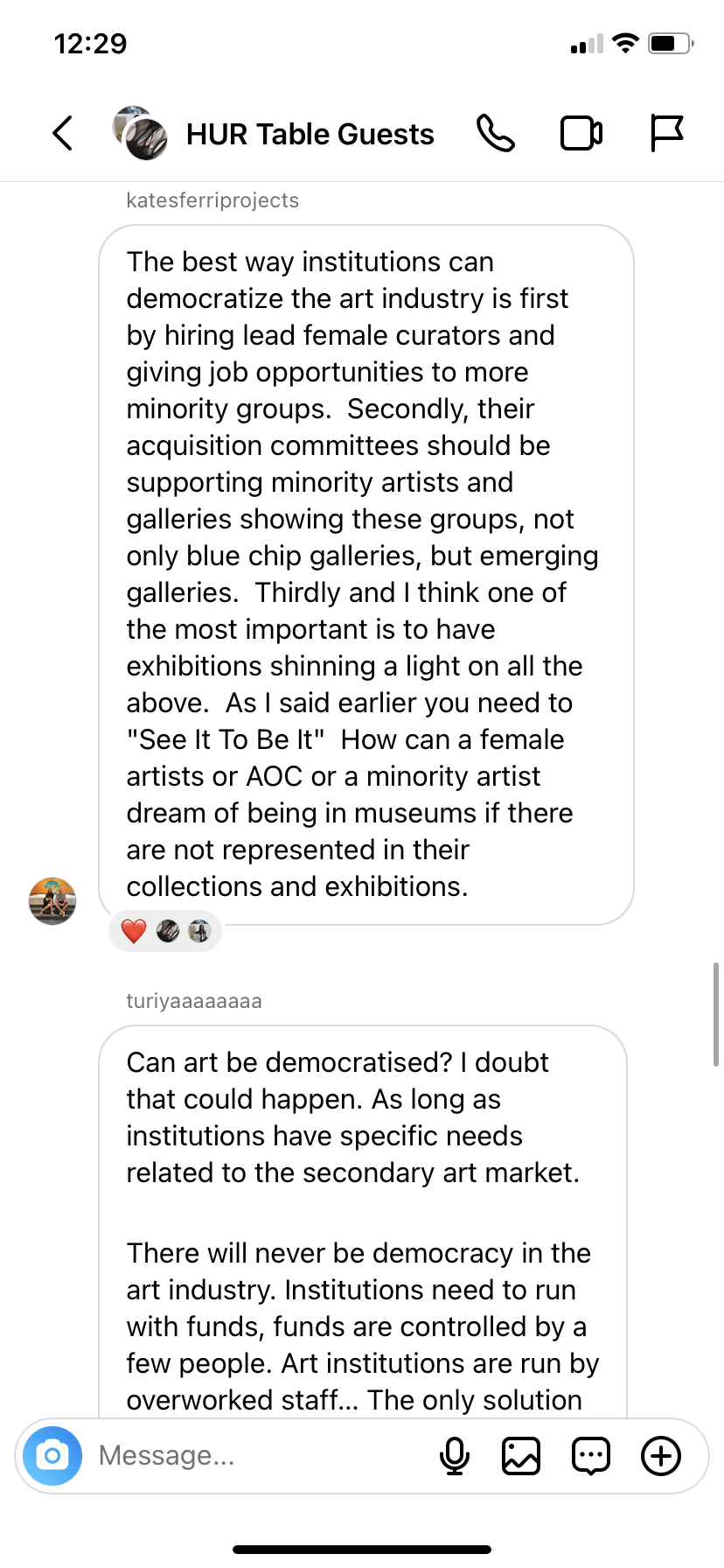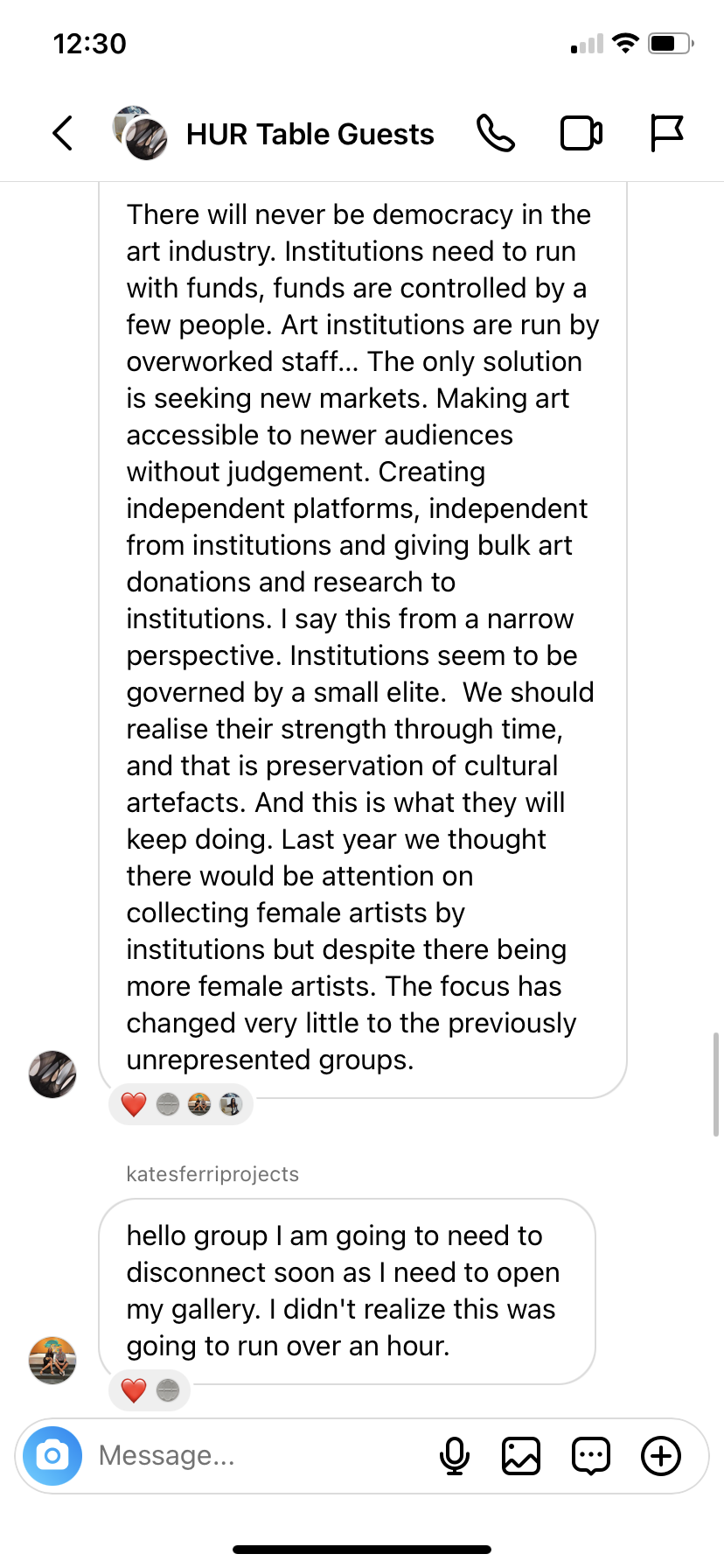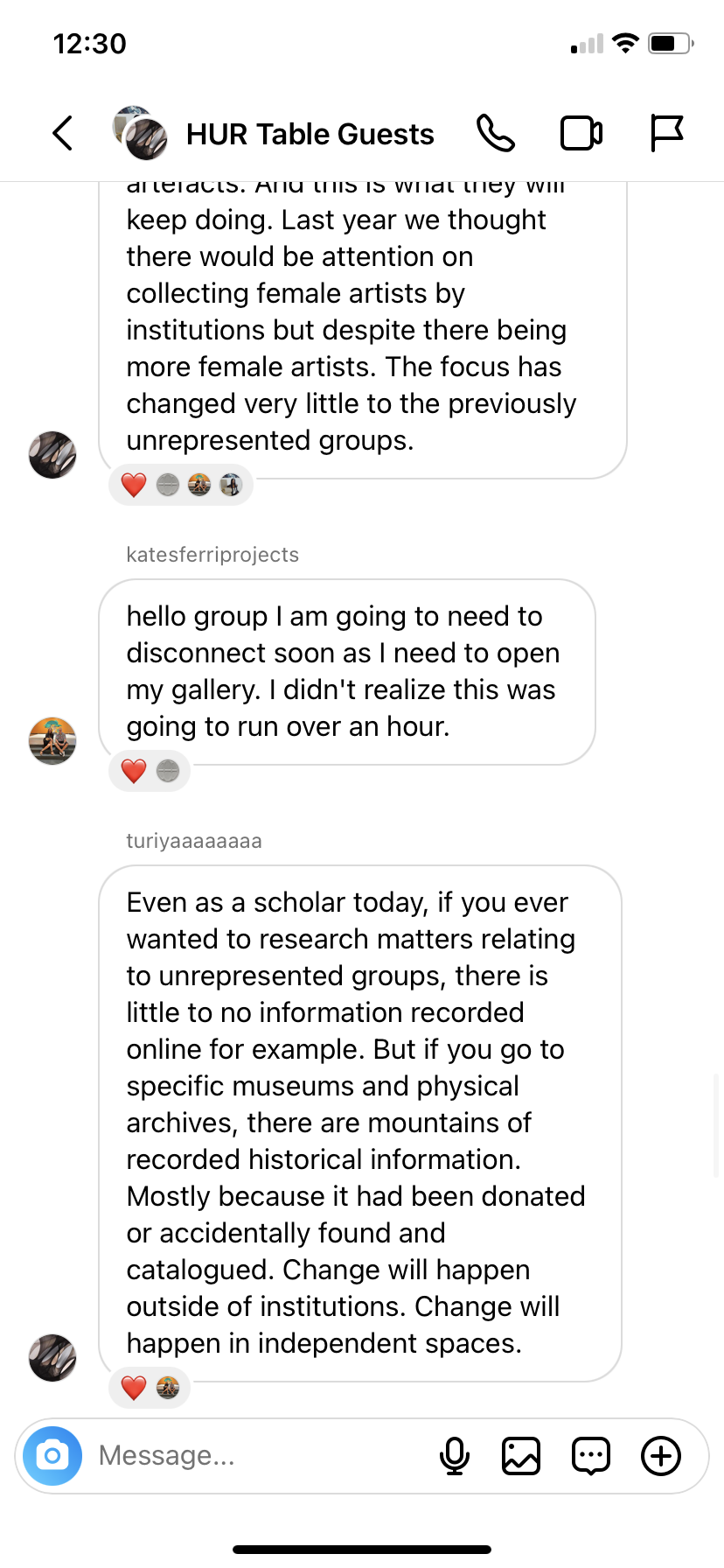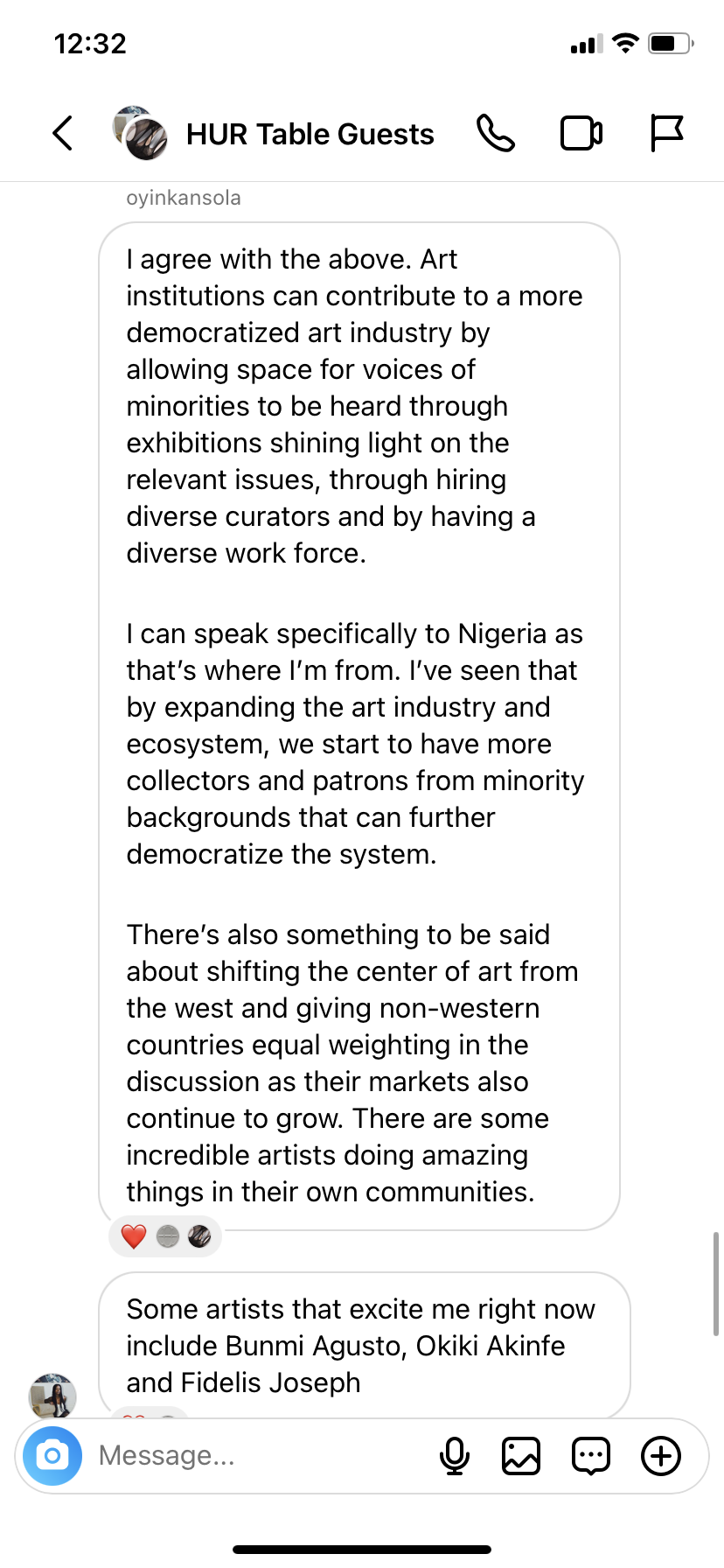Has Tech Changed Art for the Better?
Courtesy of HURS
Has Tech Changed Art for the Better?
with Oyinkansola Dada, Turiya Magadlela and Natalie Kates
By HURS Team
Art and technology have collided throughout history, but never to the extent they do now. From Blockchain technology to AI-generated art to galleries and fairs launching online viewing rooms, the art world has truly embraced tech over the past few years. So much so that a fifth of the total $65 billion dollar global art market now comes from online sales. This digital shift has had a profound impact on the way art is viewed, shared, consumed and sold and has changed the accessibility to a market that used to be known to exclude most of us.
As with all aspects of modern life, technology has its up- and downsides. While it has brought new ways to interact with art, many of the digital systems are still tied to the physical world. That could lead to a digital art world that mirrors some of the shortcomings we’ve seen in the IRL art market including the lack of accessibility, diversity and inclusivity. It begs the question whether the introduction of new technologies has truly resulted in an art market that’s more democratized, and how new technologies can contribute to art being a force for good.
OYINKANSOLA DADA
Oyinkansola Dada is the founder of Lagos and London-based Dada gallery. Dada champions and introduces the most exciting emerging artists from Africa and its Diaspora to international audiences. Originally founded as an online journal that merged politics and art in 2015, Dada gallery has evolved into an important voice in the art scene. Earlier this year, Dada also launched a new magazine called DADA. The publication bridges the gap between visual art and youth culture.
TURIYA MAGADLELA
Artist Turiya Magadlela draws from her experiences as a Black woman and a mother as well as from Black South African history to create vibrant artworks that celebrate womanhood. The South African artist sews and embroiders nylon pantyhose, correctional service uniforms and prison sheets that she folds across wooden frames. Magadlela won the prestigious FNB Art Prize in 2015, and has exhibited her works globally.
NATALIE KATES
Natalie Kates is a curator and gallerist based in New York. Her eye for new talent, and how she then nurtures and promotes emerging artists has cemented her as a prominent figure in the art scene. Kates has worked across many segments of the art industry. She founded three companies (Style Curator Inc, LatchKey Gallery and most recently Kates-Ferri Projects), which are all dedicated to social responsibility and giving back to the communities and artists that are often overlooked. Kates also co-founded the Amref-ArtBall, which connects African culture, philanthropy. The event celebrates and highlights the African continent’s talent with notable artists and guests, including Solange, Alicia Keys and Chris Rock.
We wanted to know more, and asked three industry insiders for their thoughts on how technology has impacted the art world, how the shift to digital can create a more democratized and inclusive art market and which artists, institutions and museums that are moving the conversation forward.



